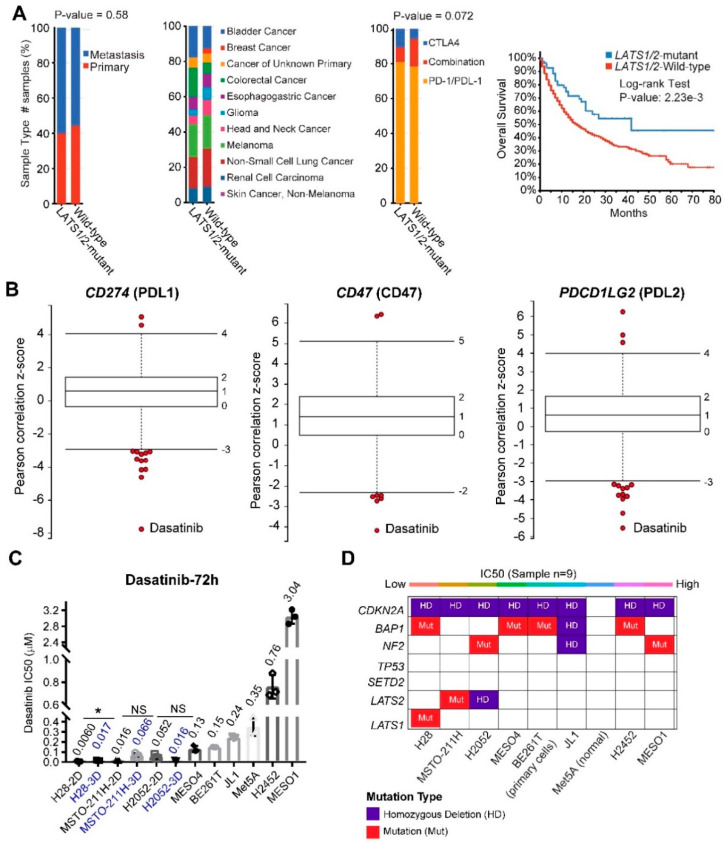Figure 6.
Identify Dasatinib as a promising therapeutic drug for MPM with LATS2 alterations. (A) LATS1/2 mutational status is associated with significantly improved overall survival in cancer patients after immune checkpoint blockage. The distribution of sample type (primary vs. metastatic; left panel), cancer type (middle panel) and drug type (anti-CTLA4; anti-PD1/PDL1; right panel) between LATS1/2-mutant and wild-type cancer. (B) Box-and-whisker plots show the extent of correlation between cytotoxic effects of Dasatinib and with several well-characterized immune markers (PDL1, PDL2, CD47), preferentially expressed by cancer cells. The y-axis indicates z scored Pearson’s correlation coefficients; line, median; box, 25–75th percentile; whiskers, 2.5th and 97.5th percentile expansion; Here, only significantly (p < 0.05) correlated inhibitors were shown (in red dots). Notably, Dasatinib is the most negatively correlated drug. (C,D) the median inhibitory concentration (IC50) values of a panel of MPM cell lines treated with Dasatinib (72 h). MPM cells seeded in triplicate at 96-well plates were drugged 24 h later, over a 12-point concentration range (two-fold dilution). DMSO-treated cells were used as control. IC50 was determined using GraphPad Prism 7. IC50 values of Dasatinib in three MPM cell lines (H28, MSTO-211H, H2052) cultured in 2D and 3D were compared. * p < 0.05 by Welch’s t-test. N = 3 biological replicates. In D, the genetic annotations of MPM cell lines (C) were shown.

